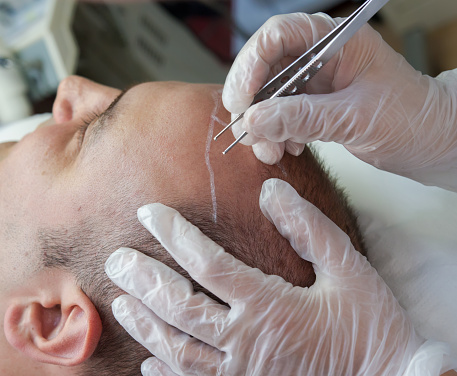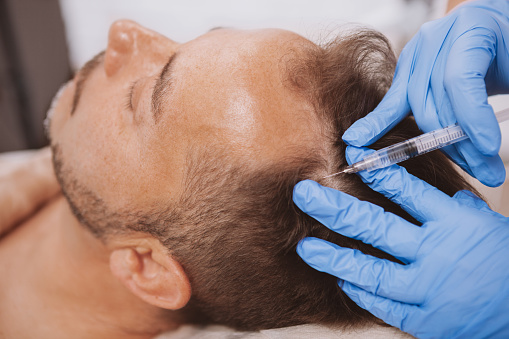Hair Restoration Abroad
Medical tourism is an ongoing trend that continues to grow. This is when people leave their country of origin in search of greener medical pastures. They head to other countries to seek better and more affordable medical procedures.
Hair restoration is just one of the many procedures that people travel abroad for. The fact is that many people have problems with thinning hair or going bald. Statistics show that about 60 percent of men and 50 percent of women experience this problem.
Thus, people the world over turn to hair transplants. The hair transplant or restoration procedure is taken to add more hair to a person’s head.
In order to show how long this problem has been plaguing humanity, the very first hair restoration procedure was done way back in 1939. The procedure evolved and innovated, and today, better procedures are being sought out for thinning hair and balding problems.
Let’s learn more about the hair restoration procedures done abroad. We’ll also be taking a look at the various benefits that medical tourism has for hair restoration procedures.
What You Should Know About Hair Restoration Procedures
When faced with thinning hair or balding, people often turn to items that they can buy over the counter in a pharmacy. They think that these easy purchases can help with the existing problem. These are usually items like topical ointments or sprays.
However, the procedures are a more effective alternative to addressing this problem.
The National Institutes of Health have reported that anywhere from 10 to 80 percent of all people who undergo these treatments will eventually grow back most if not all the hair. This regrowth will typically take as long as 3 to 4 months.

Bear in mind though that even if these procedures do work, there is still no stopping the hands of time. What does this mean? Well, this means that even if the procedures were done well and your hair starts to grow back nice and thick, the hair that was transplanted will eventually thin over time too.
At the same time, if your scalp has follicles that are dormant – which are follicles under the scalp that can no longer grow hair – then the hair restoration procedure may not be effective too.
However if this is the case, a study in 2016 shows that plasma therapy can dramatically improve 3 out of 4 hair restoration procedures. The plasma therapy can help the transplanted hair grow back thicker.
What do these things tell us? These tell us that while these procedures have come a long way, it really isn’t a silver bullet that is effective for all people.
It also must be added that these procedures only work for those who have thinning hair or balding. These are natural occurrences. If a person has lost hair due to an accident, chemotherapy, scars on the head, the procedure will not be effective.
How Do Hair Restoration Procedures Work?
Now let’s take a look at how these hair restoration procedures actually work, and the various ones that people can get.
Simply put, hair restoration is done by taking hair from other parts of your body and placing it in areas where it is thinning or balding. The most common place where hair is taken is from the back of a person’s head. However, it can also be taken from other parts of the body.
Generally, the procedure for taking hair from a body part starts by cleaning and sterilizing the area. Afterwards, a local anaesthetic is applied to the area as well. People can also request to be put to sleep by asking for sedation.
When these have been done, it is time to start the hair restoration procedures. There are generally two transplant methods that can be done. Let’s take a look at each of them.
Follicular Unit Extraction (FUE)
The first method is called follicular unit extraction or FUE. For this method, the first thing that is done is that the back of the head or the area where hair is taken is shaved.
After this, they then take single follicles from the skin of the scalp. After the procedure, you’ll be able to see marks where these follicles were taken out and removed.
Taking these follicles, the surgeon then creates small holes in a person’s scalp area. The single follicles are grafted onto these holes.
All that is left is to cover the area where work was done with bandages or gauze.
Follicular Unit Transportation (FUT)
The other transplant method is called follicular unit transportation or FUT. This procedure is a little bit different and longer than FUE.
The first thing that the surgeon does is they take out a piece of a person’s scalp. Yes, you read that right. They take a scalpel and cut out a piece of scalp. This piece of scalp is typically around 6 to 10 inches long. It can be stretched out from one ear to the other though.
The area where the scalp was taken from is closed off with stitches.
Next, it is time to use the piece of scalp that they took out. The team takes the piece of scalp and cuts it up into very small pieces. The piece can be cut up into as much as 2,000 smaller pieces. These smaller cut up pieces are referred to as grafts. These grafts are so small that they may even only have just one hair each.
Then, holes are then made onto the scalp area. These are the areas where hairs will be transplanted in, similar to the FUE method. The hairs are then placed into these holes, a process called grafting.
The final step is the same; a covering with bandages or gauze.
Recovery and Aftercare Tips
Both transplant methods spoken about can usually take hours or even days. This is largely dependent on the amount of work that needs to be done. Here are a few things to expect when recovering from the procedures.
After the procedure, the bandages and gauze will be taken out. Chances are that after the procedure, the area worked on will be swelling. The person doing the surgery may inject something onto the scalp to keep the swelling down.
Apart from the swelling though, you will also likely feel pain on the worked on areas. Thus, you may need to take certain medications for pain or for infections.

For aftercare, here are a few things that can be followed. First is that you should wait a few days before washing your hair. When you eventually do, use mild shampoos only for the next few weeks.
Rest is important after any surgery or procedure, even hair restoration procedures. Rest up for about 3 days. After that, you can go about your normal routine once again.
Avoid pressing down on your new grafts with combs or brushes for about 3 weeks. At the same time, don’t wear any hats or anything that can push down on your head.
The final tip is that in the process of recovery, you may notice some hairs begin to fall out. Don’t worry about this, as this is normal. It is a natural occurrence.
Benefits of Hair Restoration Medical Tourism
Save Some Money
Savings is a big part of medical tourism. It is the main reason why people decided to venture to other countries to seek more affordable procedures.
Let’s put this into context. Typically, hair transplants can cost anywhere from USD $4,000 to $15,000. These are merely estimates and can increase depending on how much work needs to be done, the experience and pedigree of the surgeon, and the procedure chosen.
You must also bear in mind that since this is purely cosmetic, health insurance will not cover this.
If you find the right country, the procedure can go down to $1,800 to $2,000+. If you are looking for certain countries for affordable hair transplant methods, Poland and Thailand are great choices.

Location and Culture
Medical tourism – even for hair restoration procedures – is a good way to venture out into the world and see what it has to offer. You can choose from a variety of countries, with each country offering different vistas, locales, and cultures to experience.
With hair restoration procedures costing much less than normal in other countries, you can have money tucked away for travelling and experiencing the different cultures.
Quality Care and Technology
The prevailing impression from seeking medical care abroad is that it may be lesser than other countries like the United States. However, that can’t be farther from the truth.
There is a reason why many people visit certain countries for certain procedures. Apart from the cost, it is the quality of the care that they provide. Most healthcare professionals working at these hospitals or clinics have studied abroad.
Apart from that, there are regulations in place that ensure that the care they provide is of quality. Thus, it is expected that it is on par with any other facility in the whole world. It may even be better.
At the same time, we can say the same for the technology. Across all procedures and industries, technology and procedures constantly improve and innovate.
Across the board, healthcare facilities are generally implementing these new innovations. However, some countries are more advanced than others.
For hair restoration, Turkey is known to be at the top of the game.
Are you up for it?
Not all are bothered by thinning hair or balding problems. After all, these are normal stages in one’s life. But if you would want to keep your crowning glory in its most gracious form even as you age, then what’s stopping you from going the hair restoration way?
If you’re up for it then consider going abroad and get both your hair and your soul restored.
You might also wanna check Cardiology Tourism: Go Abroad for a Heart Surgery.


